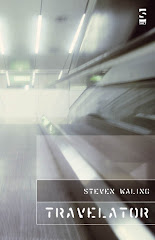Yesterday, I attempted to put down in a map all the different influences/tendencies/movements I'd heard of in British poetry over the last 60 or so years, and came up with this list (in no particular order):
Formalist, fractured narrative, eco-poetry, comic, New York, Lang-Po, linguistically innovative, vispo, concrete, narrative, sound, Movement & Post-movement, the Group, post-modernist, performative, conceptual, issue-based (gay, feminist, black, political), modernist & late modernist, British Poetry Revival, New Gen, nationalist/regional (Scotish, Welsh, North-South etc), free verse, confessional, nature mysticism, metaphysical religious/spiritual, collage, prose poetry, conventional lyric, neo-dada/surrealist, oulipo, urban pastoral, pastoral, radical landscape, landscape, flarf, Cambridge school, avant garde, performance, London school, black mountain/objectivist, Facebook poets, devotional, amateur, card verse.
I've probably missed lots of movements and tendencies, and conflated some together (as in issues-based and regional), and I'd appreciate any additions to the list. I wrote this on a landscape piece of paper, and scattered them across the page. These would be the towns and villages of the map, and different poets would make their own routes through them. My own route would start at devotional (I was a born again Christian trying to convert "the lost") and end up somewhere in the linguistically innovative, via conventional lyric, New Gen and urban pastoral.
Why is it important to do this? Well, I think if you're going to assess a visual poet, you can assess him or her by the same values as you assess a post-Movement poet. They're not going to share very many values in common. Yet they would still both call themselves poets. It's also why there's really no such thing as 'just poetry'.
A statement about my mother who has died
5 weeks ago

